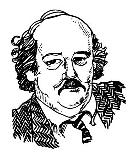(Syndicated to Kansas newspapers Oct. 19, 2015)
 The mechanics of a major change in state policy—the Legislature’s overhaul of city and school board elections, moving them from the spring in odd-numbered years to the fall of odd-numbered years—appear to have worked.
The mechanics of a major change in state policy—the Legislature’s overhaul of city and school board elections, moving them from the spring in odd-numbered years to the fall of odd-numbered years—appear to have worked.
The local, closet-to-home, all-year-long politicians are going to see their election dates change in 2017, with only minor complications here and a bit of local procedure changing there, a legislative interim committee was told earlier this month.
The simple reason for the change is that the prime target—school boards members—are often elected in low-turnout spring elections that are heavily larded with schoolteacher, school employee and teacher union voters. Now, that’s annoying to most conservative legislators who believe that if you could just get more voters involved, that education industry influence would be diluted.
Diluting the vote of both the people with a monetary interest involved—school district employees—and the relatively small percentage of Kansans who actually know who their school board members are probably makes sense if your goal is to diminish the power of unions and those most involved with K-12 education, the parents.
But whether that yields, or will yield, better schools at a lower cost, well, that’s something that we aren’t going to know for several years, maybe a decade.
Don’t forget that at some point those nonpartisan elections are going to take on a partisan tinge. No, you won’t see the party affiliation of the candidates on the ballot as you do for, say, legislative elections, but look for the advertising for those candidates to get political. And, chances are that if you’re a voter in the fall local government elections, you’re probably going to remember the name of your party’s candidates.
Will a Democrat- or Republican-tilted school board or city commission change its responsibilities? Nope. But it will eventually shift the members’ view of just what they’re supposed to do and how they intend to govern the units of government that are closest to the voters.
Yes, the surprise is that the bill passed by last year’s session dealing with such a complicated issue took care of it all at once, with no need for revisiting the new law and touching it up here or there to make it work.
But the concept also provides an interesting little look at how well local elections have worked and whether expanding the potential voter turnout is a good thing or not.
Why? Because that small percentage of voters who turn out for city and school board elections probably do so for a reason.
You gotta think that they vote because they know the issues and the problems facing city and school governance.
Voters who actually understand the local issues? Who take the time to learn what candidates want to do and to sort them out to give constituents the governance they want? That’s called enlightened self-interest.
The small percentage of those without a direct link to schools or government—say who don’t have children in schools or a zoning issue to pursue—do we actually know who is for what?
Now, we’d hate to have to take a little quiz before we get a ballot, but there’s gotta be an advantage to all of us if the voters in local elections actually know the issues at stake in that election.
Maybe there will be more turnout for fall elections of local officials. Maybe voters will study up for those elections and we’ll get better-run cities and schools. Or, maybe, higher turnout will dilute the votes of people who have high interest and knowledge about those local offices.
We’ll find out in the fall of 2017.
